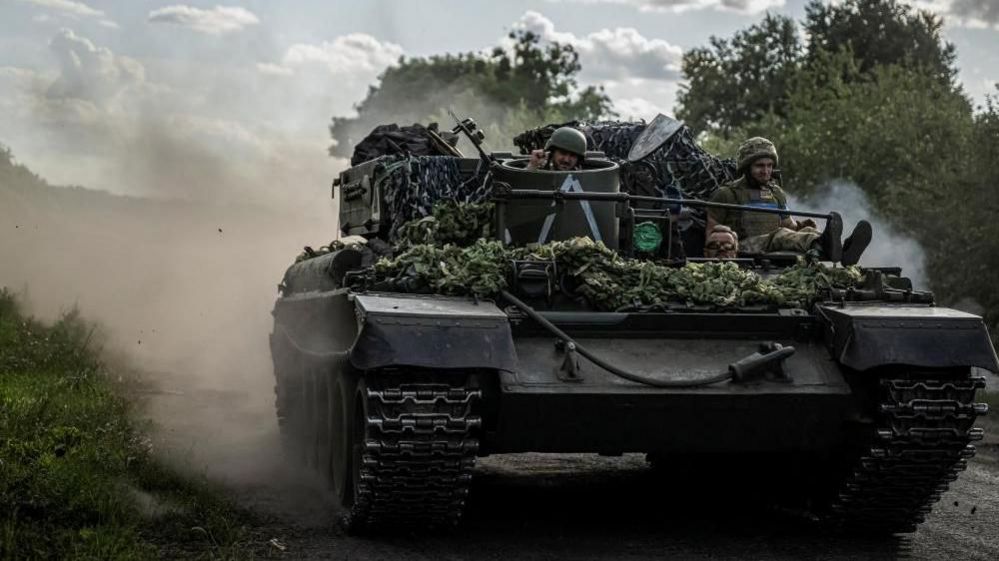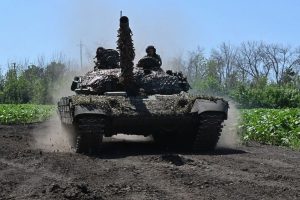Ukrainian Forces Make Bold Incursion into Russia: Successes and Challenges
3 min read

Ukrainian troops have launched one of their most ambitious operations of the conflict, marked by a bold incursion into Russian territory. This offensive, which features the triangular symbol on military vehicles heading towards the Sumy region, has captured hundreds of square kilometers of Russian land and reinvigorated Ukraine’s war effort.
The incursion has had a significant impact, leading to the capture of 28 settlements in the Kursk region, and causing nearly 200,000 Russians to flee their homes. Ukrainian drone units played a crucial role, clearing enemy communications and surveillance to pave the way for the operation. Tomash, a member of the drone unit, reflected on the mission, describing their preparation as crucial for the success of the incursion.
Despite these advances, the precise extent of Ukrainian control remains unclear. Commander-in-Chief Oleksandr Syrskyi claimed that Ukraine controls 1,000 square kilometers, but this figure is met with skepticism. Russia’s defense ministry asserts that Ukrainian attempts to push further have been repelled, though past reports have been proven incorrect.
Kyiv’s commitment to this bold maneuver is evident, and it contrasts sharply with the prolonged and grueling conflict seen over the past 18 months. This recent activity in the Sumy region evokes memories of the successful offensives of 2022, though it’s too early to definitively assess the operation’s success or failure.
The objectives of the offensive are not fully transparent, but President Volodymyr Zelensky has hinted at targeting Russian sites that threaten Ukraine and moving towards a “just peace.” Ukraine’s deployment of elite troops suggests a strategic and high-stakes operation. However, while military operations remain classified, the impact on civilians is more visible. On both sides of the border, large-scale evacuations are underway due to increased air strikes and combat.
 Soldiers report that interactions with Russian civilians are generally negative or indifferent, with some instances of misinformation about Russian troop positions. It appears Russian forces have been redeployed from the eastern front, but there is no indication of a slowdown in their advance.
Soldiers report that interactions with Russian civilians are generally negative or indifferent, with some instances of misinformation about Russian troop positions. It appears Russian forces have been redeployed from the eastern front, but there is no indication of a slowdown in their advance.
Russian President Vladimir Putin has vowed a “worthy response” to the incursion, but the immediate threat of retaliation has not been felt in the border areas, which continue to endure regular bombings. Local sentiments reflect a deep frustration with the ongoing invasion, as illustrated by comments from residents like Misha and Valera in Stetskivka, who express a desire for more aggressive action against Russia.
Ukraine’s incursion has received what some interpret as tacit Western approval, marking a significant shift in its strategic approach. The stakes are high, with new defenses being established on the outskirts of Sumy city as a precaution against a potential Russian offensive.
Ukrainian forces face the challenge of holding onto the captured Russian territory. Maintaining control requires additional towns under Ukrainian administration and sufficient reserves, which are currently lacking. The pressing concern is whether Ukraine can sustain its hold and what implications this will have for future negotiations.
The hope from Kyiv is that the incursion forces Russia to divert resources from its operations in Ukraine to defending its own territory. This shift could potentially enhance Ukraine’s position in future peace talks, though it might also complicate or delay negotiations further.
Overall, Ukraine’s latest military operation represents a daring and high-risk strategy with significant implications for the ongoing conflict. The coming weeks will be critical in determining whether this bold move will yield strategic advantages or lead to increased challenges for Ukrainian forces.